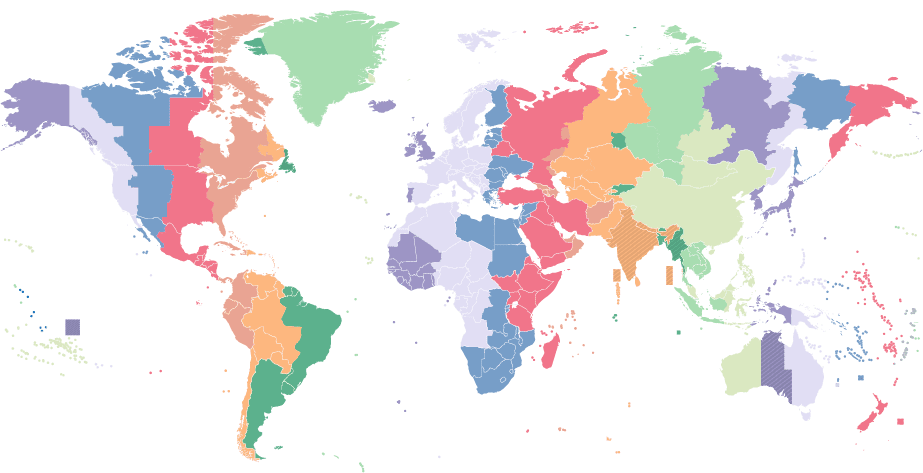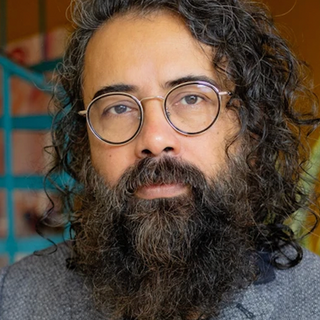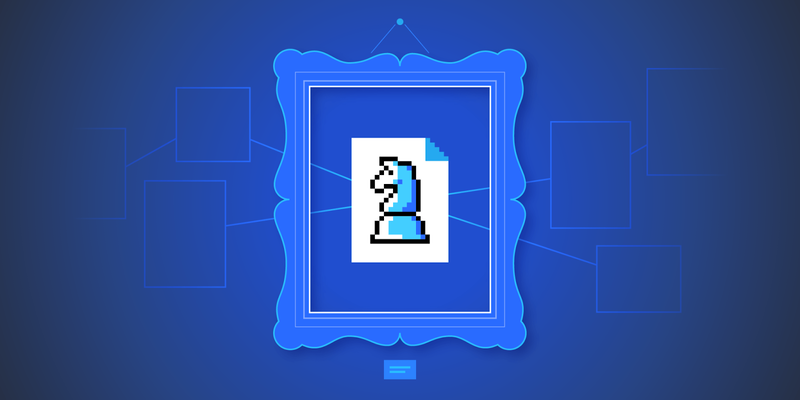The Demand for NFT Developers Continues to Rise
As of 2025, the demand for non-fungible token (NFT) developers continues to grow as the NFT market is set to climb to $61.8 billion and grow exponentially in the years to come. Gaming, real estate, art, music, and entertainment are some of the industries already leveraging NFTs to unlock new revenue streams, enhance user engagement, and establish verifiable digital scarcity. As a result, the need for skilled developers capable of designing, deploying, and maintaining NFT-based solutions has never been higher. NFT marketplace development, including platforms similar to OpenSea, is driving demand for experienced full-stack developers and specialized blockchain engineers.
The expansion of marketplaces, metaverse platforms, and play-to-earn gaming ecosystems has intensified the demand for professionals in blockchain development, smart contracts, and decentralized applications (dApps). The evolution of blockchain networks such as Ethereum, Solana, and newer Layer 2 solutions further emphasizes the growing significance of NFT expertise in the modern digital economy.
However, sourcing highly skilled developers presents a challenge due to the specialized knowledge required. Companies must navigate a highly competitive talent market while recruiting professionals with the right blend of technical skills, blockchain security expertise, and a deep understanding of Web3 principles. As the landscape evolves, hiring developers who can implement efficient systems will be crucial for businesses seeking to stay ahead in this rapidly advancing space.
This guide aims to help hiring managers and recruiters identify, assess, and attract top-tier development talent, ensuring they build strong, future-ready teams for their blockchain-based projects.
What Attributes Distinguish Quality NFT Developers From Others?
The best NFT developers possess a combination of technical proficiency, blockchain expertise, and problem-solving skills. Given the complexity of NFT-based applications, developers should have a strong foundation in smart contract development, cryptographic security, and decentralized finance (DeFi) principles.
Programmers must be proficient in blockchain programming languages such as Solidity (Ethereum), Rust (Solana), or Move (Aptos and Sui). They should have experience deploying smart contracts on testnets and mainnets, ensuring security and efficiency in token minting, transfers, and metadata storage.
A strong grasp of token standards such as ERC-721, ERC-1155, and SPL tokens is essential for ensuring interoperability and functionality across platforms. Additionally, developers should be well-versed in the InterPlanetary File System (IPFS) and Arweave for decentralized file storage, preventing metadata loss.
Beyond their technical proficiency, top programmers demonstrate creativity and an understanding of the broader NFT ecosystem, including trends in gaming, collectibles, and digital assets. They must also possess strong communication skills because they will regularly work with designers, business stakeholders, and security experts to craft smooth experiences. NFT developers may also contribute to broader software development efforts, supporting web development and integrating systems with existing infrastructure.
How Can You Identify the Ideal NFT Developer for You?
Finding the right developer depends on your project’s scope, technical complexity, and business objectives. Identifying the right level of expertise is crucial when building a simple NFT minting dApp, a full-scale marketplace, or integrating NFTs into an existing platform.
Junior developers typically handle basic smart contract creation, minting logic, and token transfers, often assisting with front-end integration using frameworks like React and Web3.js. While they may require guidance on advanced security considerations, they offer a cost-effective solution for smaller projects and startups.
Senior developers bring extensive experience in blockchain architecture, gas optimization (techniques to reduce the cost of executing transactions or smart contracts on the blockchain), and security best practices. They specialize in writing secure and upgradeable contracts, managing royalties, and implementing cross-chain functionality. These developers are ideal for complex platforms that require deep technical knowledge and a strategic approach.
To ensure you find the right talent, prioritize candidates with hands-on experience in NFT deployments, contributions to open-source blockchain initiatives, and relevant blockchain certifications. Employing a dedicated team that includes project managers can improve the development process by aligning goals, managing scope, and coordinating between smart contract developers, front-end engineers, and designers.
Complementary Technology Skills for NFT Developers
NFT experts often work across multiple blockchain networks and technology stacks. Essential complementary skills include:
Smart Contract Development: An understanding of languages and tools like Solidity (Ethereum, Polygon, Binance Smart Chain), Rust (Solana), Cadence (Flow), Move (Aptos, Sui) is essential for developing NFT applications.
Front-end & Web3 Integration: NFT platforms need to be user friendly and interactive. Experience with libraries and frameworks like React.js, Next.js, Web3.js, Ethers.js, Moralis, and WalletConnect is helpful for front end and Web3 integration.
Decentralized Storage: NFT metadata and assets need to be stored securely and efficiently. Examples of decentralized storage solutions include IPFS, Arweave, and Filecoin.
Security Best Practices: Security is paramount in any NFT application or platform. Key practices for ensuring security include smart contract auditing and preventing reentrancy attacks.
Cross-Chain Development: The NFT space is becoming increasingly interconnected. Experience with bridges, Layer 2 solutions like Arbitrum, Optimism, or interoperability protocols like Wormhole is highly beneficial for NFT developers.
Marketplace & DeFi Integrations: A deep understanding of concepts like royalties, liquidity pools, and DAO governance is essential for building comprehensive NFT platforms that integrate marketplace and DeFi functionalities.
How to Write an NFT Developer Job Description
An effective developer job description should start with a clear and specific title, such as “Senior NFT Smart Contract Developer” or “Blockchain Developer.” It should introduce the company, its objectives, and the role of NFT development within its business strategy, highlighting the impact the developer will have on the product and Web3 ecosystem.
The description should outline key responsibilities, including developing and deploying smart contracts, implementing marketplace features like auctions and royalties, ensuring security and gas optimization, and collaborating with UI/UX teams for dApp integration. The required technical skills should be listed, including blockchain programming languages like Solidity or Rust, familiarity with standards, decentralized storage solutions, and Web3 libraries.
To attract top talent, companies should emphasize benefits such as competitive salaries, token incentives, remote work flexibility, and opportunities to contribute to open-source projects or cutting-edge Web3 innovations. A well-structured job description helps ensure the right developers are drawn to the role.
What Are the Most Important NFT Developer Interview Questions?
Hiring the right person requires thoroughly assessing their blockchain expertise, problem-solving skills, and ability to write efficient smart contracts. Below are key questions to evaluate a candidate’s proficiency in NFT development:
How would you implement an ERC-721 contract?
This question tests a candidate’s understanding of Ethereum’s NFT standard. Look for an answer that includes contract inheritance, metadata management, and minting logic using Solidity. A strong response should reference OpenZeppelin’s ERC-721 implementation, explain the importance of safe transfers (safeTransferFrom), and describe additional features like minting restrictions or burn functions. The best candidates should also discuss handling ownership, approvals, and metadata URI updates while ensuring contract security and efficiency.
What security vulnerabilities should you watch for when developing NFT smart contracts?
NFT smart contracts are prone to various security risks. Strong candidates will mention reentrancy attacks, unchecked external calls, improper access control, and gas inefficiencies. They should also discuss best practices like using the ReentrancyGuard modifier, verifying user inputs, and implementing role-based access control with OpenZeppelin’s AccessControl. Additionally, they should be aware of metadata manipulation risks, front-running attacks, and contract upgradeability exploits. Knowledge of security tools like Slither and MythX, as well as testing frameworks like Foundry and Hardhat, is a plus.
How would you optimize gas fees for minting NFTs?
Gas optimization is critical to improving user experience and reducing costs. Candidates should discuss batch minting (e.g., ERC-721A), lazy minting (off-chain metadata generation with on-chain minting triggers), and storage compression techniques like bit-packing and struct optimization. Layer 2 scaling solutions like zk-Rollups and Optimistic Rollups should also be mentioned. Advanced answers may include leveraging calldata instead of storage, efficient mapping structures, and using Merkle trees or cryptographic proofs for scalable NFT distribution.
Can you describe a challenging NFT project you worked on?
This question helps evaluate real-world problem-solving skills. Candidates should highlight a complex project they contributed to, explaining the technical challenges they faced and how they overcame them. Examples include implementing royalty enforcement through EIP-2981, ensuring metadata immutability with decentralized storage (IPFS or Arweave), or integrating Chainlink or The Graph for dynamic NFT metadata. The best candidates will explain trade-offs, security considerations, and how they optimized performance or user experience.
How do you integrate NFTs into a front-end application?
A solid developer must be proficient in Web3 integration. Look for answers that include using Web3.js or Ethers.js for contract interaction, handling wallet authentication (e.g., MetaMask, WalletConnect), and managing blockchain events in real-time with event listeners, for example, contract.on("Transfer", callback). Candidates should also explain how they handle gas fee estimation, implement The Graph for querying blockchain data, and use caching or lazy loading to optimize user experience. Bonus points if they mention working with frameworks like Next.js for SSR (server-side rendering) and improving UI responsiveness.
How would you design a cross-chain NFT solution?
Interoperability is a key challenge in Web3. Strong candidates should discuss different approaches, such as bridging mechanisms (locking NFTs on one chain and minting wrapped versions on another), using interoperability protocols like Wormhole, Axelar, or LayerZero, and implementing cross-chain standards like CCIP (Chainlink Cross-Chain Interoperability Protocol). Advanced responses may include leveraging Cosmos Inter-Blockchain Communication (Cosmos IBC) or creating a hybrid solution that dynamically transfers NFT metadata across chains while maintaining provenance and authenticity.
By evaluating candidates with these questions, hiring managers can identify developers with the right mix of technical expertise, problem-solving abilities, and security awareness to build robust, scalable blockchain applications.
Why Do Companies Hire NFT Developers?
As Web3 and blockchain technology evolve, NFT developers play a crucial role in shaping decentralized applications, digital asset platforms, and metaverse experiences. They enable digital ownership in gaming, revolutionize art authentication, facilitate real-world asset tokenization, and introduce innovative financial models through NFTs. Their expertise ensures seamless integration of blockchain technology into various industries, driving new business models and enhancing user engagement.
Hiring skilled NFT developers allows companies to stay ahead of the competition by building reliable, high-quality blockchain applications that meet their requirements. As the NFT and Web3 ecosystem continues to expand, businesses that invest in top-tier development talent position themselves for long-term success, ensuring they remain agile and innovative in an industry defined by rapid technological advancements.



























